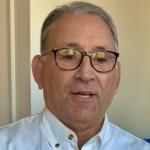
Sometimes a few words are worth 1,000 words.
"...[H]ydrocodone and hydrocodone combination products produce the same effects that other opioid agonists produce... but we could [include] heroin there, as well, because what we're really talking about are heroin pills."
Andrew Kolodny, President of PROP, Testimony at FDA hearing, Friday, January 25, 2013
“When we talk about opioid pain medicines, we're essentially talking about heroin pills."
Andrew Kolodny "Understanding the Basics about Prescription Painkillers." PBS, 1/17/18
"There is very little difference between a heroin molecule and a hydrocodone molecule."
Andrew Kolodny in U.S News and World Report, Jan. 24, 2013
OK, you get it. No need to dwell upon the obvious. Andrew Kolodny, a psychiatrist, who, despite his ignorance of even the most fundamental principles of pharmacology, is routinely cited as an expert in all matters pertaining to opioid use. It is not difficult to demonstrate this ignorance. His "heroin pill" crusade does the job quite well.
Vicodin is to heroin is as a pebble is to a boulder.
An analogy of Kolodny's false argument is that the pebble and the boulder will do equal damage if they fall on your car because they are both made of rock. While it is true that the heroin and Vicodin belong to the same class of drugs, they can only be equivalent if you ignore the relative potencies, doses, methods of dosing, and the ease of crossing the blood-brain barrier of both drugs. But you can't ignore them; these properties are critical in determining the pharmacological effect of a drug on a person. In the absence of these parameters, the pebble and the boulder are, indeed, identical.
Now it's irony time.
According to a recent report by the Associated Press, we now have "heroin pills" and it is not the "pebble kind" that Kolodny has been harping on for years. Instead, we are now dealing with a deadly "boulder pill for which he and his anti-opioid zealot comrades bear (at the very least) partial responsibility (1). These pills are the real deal and the real killers. Thousands of deadly light blue tablets of what the DEA calls "Mexican Oxy" are pouring into the Southwest and taking quite a toll. But "Oxy," which is slang for oxycodone, is neither oxycodone nor heroin. It's worse - fentanyl dressed up to look like prescription oxycodone.

(Left) Mexican Oxy seized by the DEA. (Right) A 30 mg oxycodone tablet. Photos: DEA
Although it is more accurate to refer to Mexican Oxy, as "heroin pills," they are worse. These counterfeit oxycodone pills contain varying amounts (2) of fentanyl, the drug which is responsible for, by far, the most opioid overdose deaths - three-times the number of deaths caused by oxycodone and six-times that of hydrocodone.

The "real" heroin pills. Original source: The 15 drugs responsible for most overdose deaths in 2011. Source: National Vital Statistics Reports
The irony of yet another mess created by the reflexive and ill-advised anti-opioid mentality that has the country in its grips becomes obvious: by falsely equating hydrocodone or oxycodone with heroin (hence, "heroin pills,") Kolodny, et. al, succeeded in getting preposterous restrictions placed upon them, making it next to impossible for pain patients to find a doctor willing to prescribe them or a pharmacy willing to fill them.
Bad science leads to bad policy.
It's almost funny. With the shortage of Kolodny's imaginary "heroin pills," we now have real ones, which contain a "substitute" drug that is far more dangerous than the drugs that have been effectively banned, or, at the very least, made almost unattainable.
But let's give a pass to desperate pain patients who may not find this so amusing. After all, some of them have been forced to buy deadly garbage off the street because of the failure of our medical system to provide them with the drugs they need to function or even to survive.
For which we can thank the Kolodnys of the world for stamping their ignorant imprint on our drug policies.
Thanks for the poison pill, folks.
NOTES:
(1) See The Opioid Epidemic In 6 Charts Designed To Deceive You:
"Yes, they are. But Kolodny omits a vital bit of information — potency. While the physiological effect of hydrocodone on the brain may be the same as heroin (the two drugs hit the same receptors), the functional difference between the two drugs is night and day. The magnitude of the effect is conveniently omitted from this "equation." Heroin packs a much more powerful punch than hydrocodone, especially at doses that are used by addicts. People can become addicted to heroin (or even die) from a single injection. It is virtually impossible for one hydrocodone pill to kill or addict anyone. The two drugs don't even belong in the same sentence, even though they happen to belong to the same class of drugs."
(2) Any chemist who works on the formulation of pills will tell you that it is no simple matter to mix different solids and come up with a uniform powder which contains the same relative composition of drugs no matter where a sample is taken and analyzed. Imagine a poorly equipped lab with untrained people pressing the tablets without any quality control. It is guaranteed that different batches of Mexican Oxy will contain varying amounts of fentanyl. Considering that 1-2 mg is a lethal dose it is not hard to see why people are dying from these pills.



